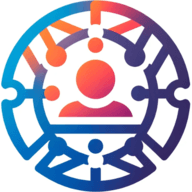In today's fast-paced business environment, managing a temporary workforce is becoming increasingly common. However, it presents unique challenges that require innovative solutions. This blog post delves into the intricacies of managing a temporary workforce, offering practical strategies to overcome the hurdles and maximize the benefits of this flexible employment model.
Understanding the Temporary Workforce
The temporary workforce, often referred to as contingent or contract workers, is a rapidly growing segment of the global labor market. These workers are typically hired for a specific project or a set period, providing companies with the flexibility to scale their workforce as needed.
However, managing a temporary workforce is not without its challenges. The transient nature of these workers can lead to issues with engagement, productivity, and compliance. Furthermore, the lack of long-term commitment can make it difficult to build a cohesive team culture.
To effectively manage these challenges, it's crucial to understand the unique needs and expectations of temporary workers. They often value flexibility, variety, and the opportunity to develop new skills. By aligning your management strategies with these values, you can create a positive work environment that motivates temporary workers and drives productivity.
Building a Strong Onboarding Process
A robust onboarding process is essential for integrating temporary workers into your team quickly and effectively. This process should provide a comprehensive overview of the company's policies, culture, and expectations.
Start by providing clear job descriptions and performance expectations. This will help temporary workers understand their role and how they contribute to the company's goals. Also, ensure they have the necessary resources and training to perform their tasks effectively.
Regular check-ins during the onboarding process can also be beneficial. These meetings provide an opportunity to address any issues or concerns, and to provide feedback on performance. This proactive approach can help prevent misunderstandings and ensure that temporary workers feel supported and valued.
Fostering Engagement and Productivity
Engagement and productivity can be significant challenges when managing a temporary workforce. Without the sense of permanency and belonging that comes with a full-time position, temporary workers may feel disconnected from the company and its goals.
To foster engagement, consider including temporary workers in team meetings and social events. This can help them feel part of the team and improve their understanding of the company's culture and values. Recognition and rewards for good performance can also boost morale and motivation.
Productivity can be enhanced by providing clear direction and regular feedback. Temporary workers need to understand what is expected of them and how their performance will be measured. Regular feedback can help them stay on track and identify areas for improvement.
Ensuring Compliance and Mitigating Risks
Compliance is another critical aspect of managing a temporary workforce. Temporary workers are subject to the same labor laws and regulations as permanent employees, and failure to comply can result in legal and financial repercussions.
To ensure compliance, it's essential to have a thorough understanding of the relevant laws and regulations. This includes issues such as wage and hour laws, health and safety regulations, and anti-discrimination laws. Regular training and updates can help keep you and your team informed and compliant.
Mitigating risks is also crucial. This includes risks related to data security, confidentiality, and liability. Implementing robust policies and procedures can help manage these risks and protect your company.
Leveraging Technology for Effective Management
Technology can be a powerful tool for managing a temporary workforce. From recruitment and onboarding to performance management and payroll, there are numerous software solutions designed to streamline these processes.
For example, workforce management software can help you schedule and track temporary workers, ensuring you have the right people in the right place at the right time. Training platforms can provide flexible, on-demand learning opportunities, allowing temporary workers to develop their skills at their own pace.
Moreover, communication tools can facilitate collaboration and information sharing, helping to build a cohesive team culture. By leveraging technology, you can improve efficiency, compliance, and engagement, making the management of your temporary workforce more effective and less stressful.
Embracing the Future of Work
The rise of the temporary workforce is a trend that shows no signs of slowing down. As businesses continue to seek flexibility and agility in a rapidly changing market, the demand for temporary workers is likely to increase.
By understanding the unique challenges of managing a temporary workforce and implementing effective strategies to overcome them, you can leverage this trend to your advantage. This not only benefits your business but also contributes to a more flexible and inclusive labor market.
Embracing the temporary workforce is not just about managing challenges, but also about seizing opportunities. It's about recognizing the value that these workers bring to your organization and creating an environment where they can thrive.
Conquering the Challenges of Temporary Workforce Management
Managing a temporary workforce can be a complex task, but with the right strategies, it's a challenge that can be overcome. By understanding the needs of temporary workers, building a strong onboarding process, fostering engagement, ensuring compliance, leveraging technology, and embracing the future of work, you can turn these challenges into opportunities. The future of work is here, and it's more flexible, diverse, and dynamic than ever before.

